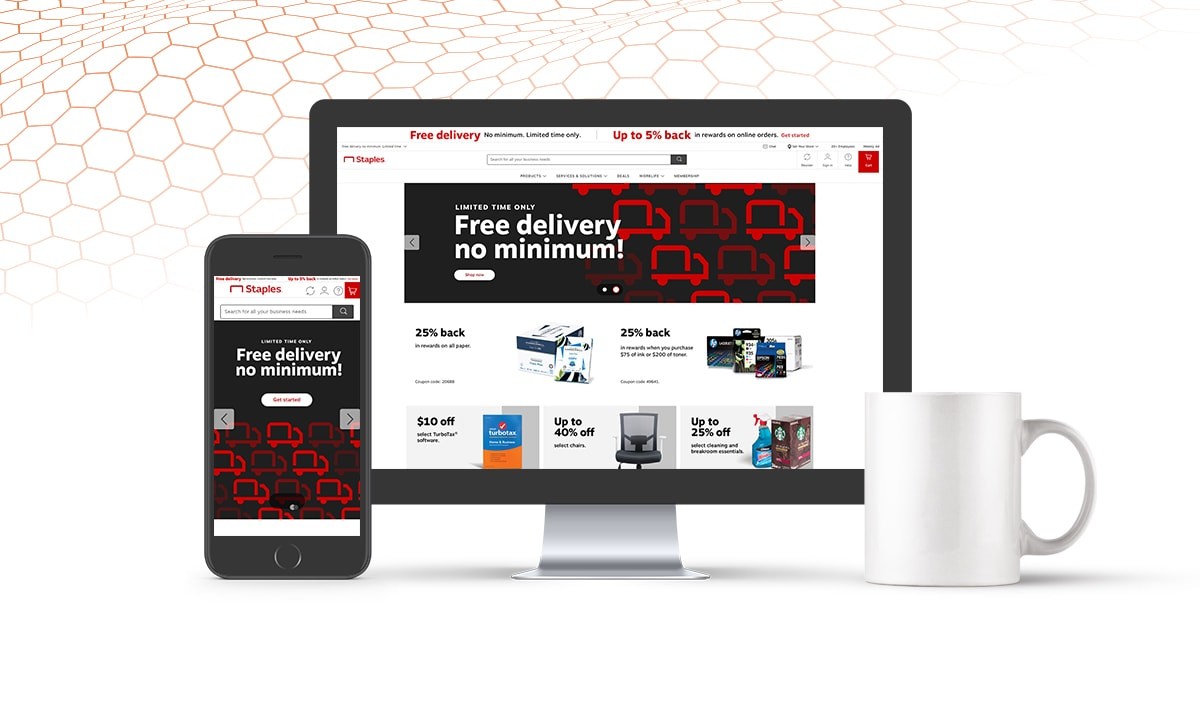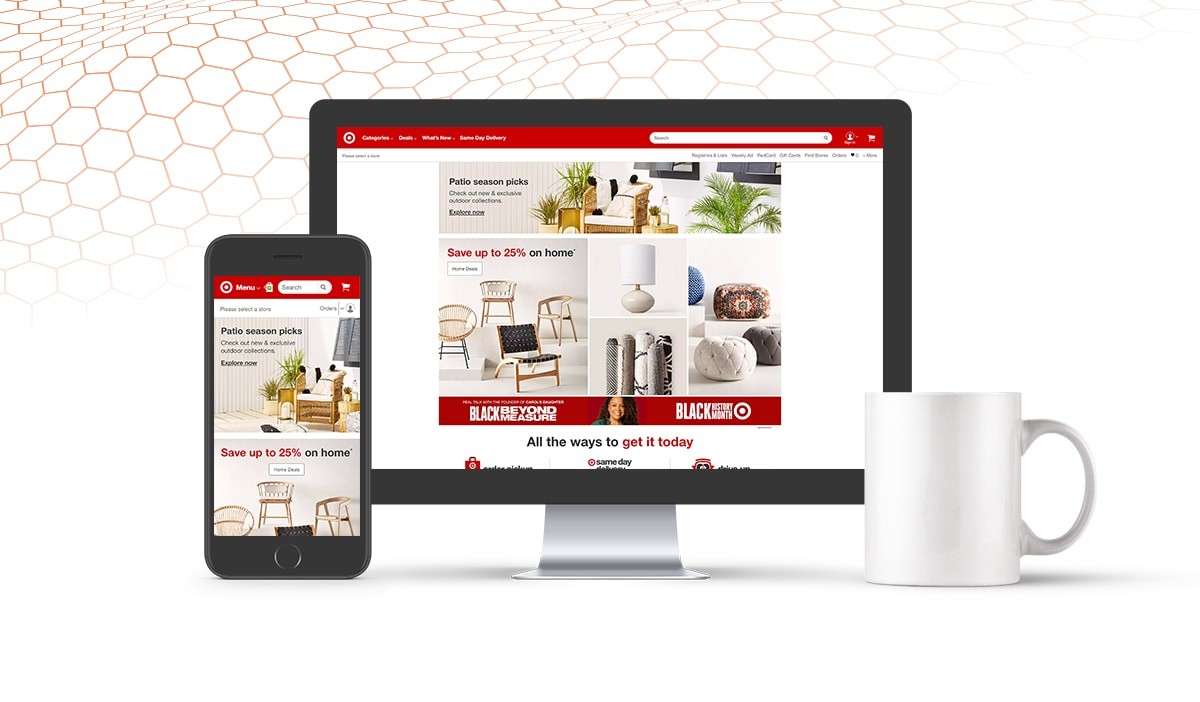To Choose, Or Not To Choose PWA for eCommerce Website
Progressive Web Applications (PWA) are not the latest thing since the Internet has discussed them a couple of years already.
But they are still a high-potential technology that can bring you a lot of benefits if you use them adequately.
Companies such as Forbes, Starbucks, and Pinterest run websites are based on this technology. For example, adopting PWA increased the time people spend on Pinterest by 40%, as well as increase engagement by up to 60%.
So, is it also profitable for eCommerce, and how do you decide whether you need to move to PWA right now? Let’s figure it out!
What Is PWA?
PWA is a technology that combines modern web capabilities with an app-like experience. As a result, you get a two-in-one website and application. There is no need to develop both of them if you implement PWA. You just get a website that looks and performs like a traditional app. Users, in turn, get an opportunity to add your icon to their home screens once they land on your website.
Take a look at what PWA consists of.
It is an approximate structure that can give you an idea of what PWA is. It includes the main elements: Application Shell, Service Worker, and App Manifest.
Application Shell consists of the HTML, CSS, and JavaScript required for the qualitative user interface. Service Worker includes JavaScript code that undertakes background processes. Application Manifest conveys such data as pages, icons, color screensavers, names, etc.
PWA website can be easily improved by combining it with AMP – another high technology that accelerates pages astronomically!
But how do you determine whether PWA will positively influence your business? The answer lies in specific aspects of your web store and the marketing strategy you choose. PWA is the right solution for you if:
- ✔ Your store processes a lot of mobile purchases.
- ✔ You want to get more impulsive purchases, and it would be great if customers could buy something even if they are offline.
- ✔ You build long-term relationships with customers (you want them to come back).
- ✔ You don’t rely on Google or Apple app marketplaces (PWA applications are installed on mobile devices directly from a browser).
Reasons To Choose (Or Not To Choose) PWA
Let’s dive into the advantages and disadvantages of the technology to better understand if you need to move to it right away.
Pros
Progressive Web Application includes UX of mobile apps. A store works on mobile devices in a convenient way and without any issues if it is based on PWA technology. This means that web stores built with PWA save a vast amount of development and support budget. PWA makes away with a need to maintain Android, iOS, and web versions of a store simultaneously. You get a single storefront that works on all the platforms as a native app. It only requires standard web technologies like HTML, CSS, and JavaScript.
Browsing with PWA is seamless. Customers can browse PWA stores offline, which positively affects sales. It also offers a simplified user experience on the checkout stage, which efficiently improves conversions. PWA sites can work with a little web traffic, which significantly decreases the number of website abandons. People don’t leave your store because of slow loading, but continue purchasing even in case of a poor connection.
PWA supports headless architecture. PWA easily integrates with any platform you run your web store on. If you decide to change it, frontend work isn’t required. Moreover, PWA is compatible with Magento 1 as well as with Magento 2, so you can implement it without migration.
PWA is incredibly fast! Its loading time shows 2-3x better results than conventional web stores. It reduces server load, which, in turn, decreases the possibility that your website will crash on Black Friday. Also, Google loves PWA and keeps such sites higher in rankings.
PWA apps are light. They weigh almost nothing. Compare Twitter Lite size (1.5 Mb) with that of its native app (100 Mb). People can install them in a flash, and they are highly likely not to delete the apps to empty the storage.
Updates are applied instantly for mobile users. Your PWA app is also a website, so if you make some changes, they go into effect immediately on your users’ devices. You don’t need to wait until Google or Apple review your suggestions. Since people share your app with links, it increases your backlinks amount, which improves SEO.
Cons
There is still a lack of functionality. Magento hasn’t developed all the necessary tools to implement PWA solutions, so it may turn out too expensive since you’ll need to hire third programmers. On the other hand, the company has already launched its PWA studio—a set of tools that will help merchants build PWA with ease. When it’s entirely done, it will save you money and time for further development. But if you have never had an online store and are about to build one, you should probably choose PWA because it will chip for you. Those who want to rebuild an old web store should estimate expenses first.
PWA is for websites with a huge amount of items. If you sell cars, for example, and there are not dozens of pages on your store website, then PWA is useless for you. Such websites typically don’t have performance issues, so you don’t need to accelerate them.
PWA makes no sense if your customers don’t buy from mobile. The purpose of the technology is uniting web and mobile experiences. PWA is definitely for those who sell items that could be bought impulsively. If you sell apartments, it’s highly unlikely that anybody will buy it from a mobile device. When people purchase something serious, they prefer reading, comparing, or even going to the brick-and-mortar store to try it out.
PWA Examples in eCommerce
Staples is a US-based retailer of office supplies. Once, the company discovered that its bounce rate increased along with loading speed. Then they decided to move to PWA to accelerate pages. As a result, they got a 10% increase in conversions.
Target is one of the biggest US retailers. The company conducted a survey that showed that 80% of their customers start a path to purchase on one device and finish on another. That’s why Target decided to improve user experience through web and mobile to provide consumers with a seamless and convenient way to buy.
West Elm sells stylish furniture and home decor. Their store offers almost everything you need to design an apartment. Once the company implemented PWA, they saw a 15% increase in time people spend on the website and a 9% lift in conversions.
Final Words
So, PWA will be the right solution for those who are going to build and launch their first web store. The technology will save you money and help you to stay up to date. At the same time, it can turn out to be too expensive for actual online storeowners, because it requires significant efforts to rebuild a ready-made one. Anyway, if you consider moving to PWA for ecommerce, feel sure to contact a web development agency and ask them to estimate expenses. We’ll be grateful if you get in touch with us via this form.
We thank Ulyana Kiklevich for help in preparing and writing this article.
Need assistance in creating a PWA for your online business?
Feel free to fill in the contact form, and we’ll get back to you ASAP





